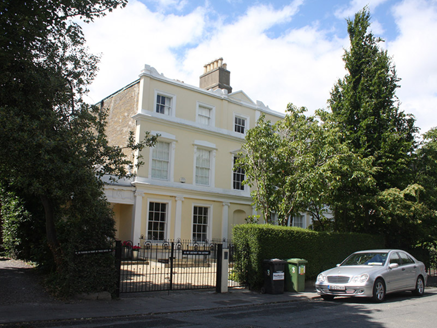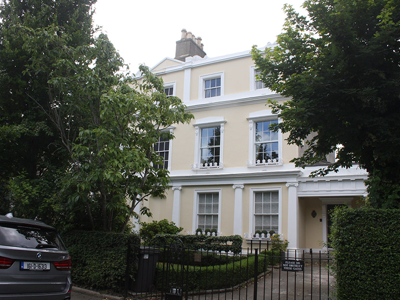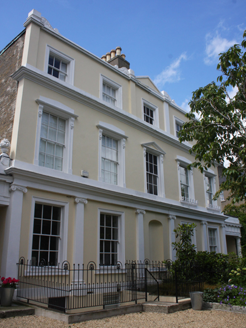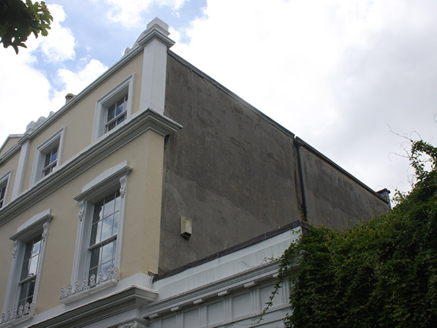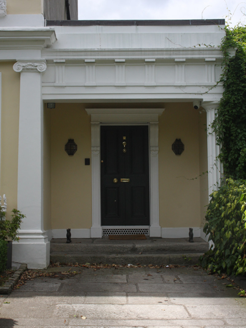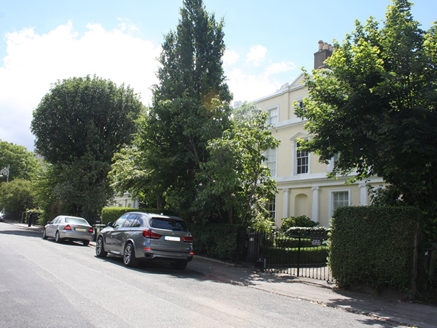Survey Data
Reg No
50110464
Rating
Regional
Categories of Special Interest
Architectural, Artistic, Historical
Original Use
House
In Use As
House
Date
1825 - 1835
Coordinates
316091, 232730
Date Recorded
25/06/2017
Date Updated
--/--/--
Description
Semi-detached two-bay three-storey house, built 1830, as one of pair, having basement and single-storey porch to side (north) elevation. M-profile hipped slate roof with terracotta ridge tiles, concealed by rendered parapet having stucco scrolls with anthropomorphic and foliate decoration. Rendered chimneystacks with clay pots. Hipped slate roof to porch, concealed by rendered parapet. Rendered walls, render details comprising pilasters to second floor, moulded cornices. Ionic pilasters to ground floor supporting moulded cornice, stone plinth course over basement. Fluted Doric columns supporting frieze having triglyphs and metopes, moulded cornice, to front of porch. Square-headed window openings with moulded render surrounds, those to first floor having scrolled consoles with moulded cornices and pediments. Stone sills to ground floor openings. Cast-iron railings with foliate motif to first and ground floor openings. Continuous masonry sill course to first and second floor windows openings. Three-over-three pane and six-over-six pane timber sliding sash windows. Recessed entrance to front of porch. Square-headed door opening having moulded render doorcase comprising panelled pilasters with scrolled consoles supporting stepped cornice, timber panelled door. Pair of cast-iron boot-scrapes to granite platform, granite steps. Square and segmental-headed door openings to basement. Cast-iron railings to front of house.
Appraisal
Elaborate stucco decoration gives a grandiose classical flavour to this remarkably intact composition, while also having a unifying effect on the paired form, making the two houses appear as one. Salient features are retained throughout. Formerly overlooking a large wedge-shaped green, the houses were built as a speculative venture by Charles Jaspar Joly, the son of Jean Jaspar Joly (d.1823) who came to Ireland from France as private secretary of Lord William Fitzgerald and acquired land in this area. Later this house was the residence of Lilo and Edward Stephens, who wrote a biography of Edward's uncle J.M. Synge; Edward, a barrister, was also involved with Michael Collins in the Treaty negotiations for the setting up of the Irish Free State. It forms part of Harcourt Terrace, which is acknowledged as Ireland's finest surviving group of Regency houses.
